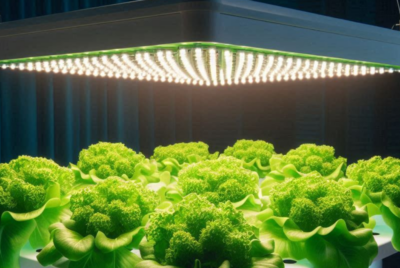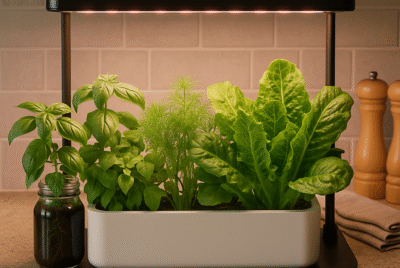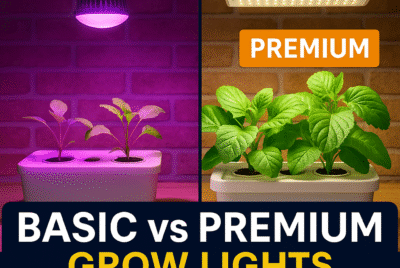DYI Hydroponic Vegetables: Your Future
How Hydroponic Systems Work
Hydroponics is a method of growing plants in a water-based, nutrient-rich solution without soil. Instead, plants are supported by an inert growing medium like coconut coir or perlite. The roots receive all the nutrients they need directly from the water, resulting in faster growth and higher yields.
Types of Hydroponic Systems
There are several types of hydroponic systems, including:
– Deep Water Culture (DWC) – Plants float on a nutrient solution with roots submerged.
– Nutrient Film Technique (NFT) – A thin stream of nutrients flows over plant roots.
– Aeroponics – Roots are suspended in air and misted with nutrients.
– Wick System – A passive system where plants absorb nutrients through a wick.
Best Vegetables for Hydroponic Growth
Not all veggies thrive in hydroponic setups, but these do exceptionally well:
Leafy Greens
– Lettuce – Grows quickly and requires minimal maintenance.
– Spinach – High yield and nutrient-dense.
– Kale – Superfood packed with vitamins.
Fruiting Vegetables
– Tomatoes – One of the most popular hydroponic crops.
– Cucumbers – High-yield and fast-growing.
– Peppers – Thrive in controlled hydroponic environments.
Herbs
– Basil – Grows well hydroponically and enhances any dish.
– Mint – Spreads rapidly and is easy to maintain.
– Cilantro – Prefers consistent moisture, perfect for hydroponics.
Hydroponic Setup for Beginners
Starting your hydroponic garden isn’t as complicated as you might think. Here’s what you’ll need:
1. A Hydroponic System – Choose from kits or DIY setups.
2. Grow Lights – LED or fluorescent lights to replace sunlight.
3. Nutrient Solution – Provides essential minerals to plants.
4. Growing Medium – Like rock wool, perlite, or clay pebbles.
5. Water Pump & Reservoir – Circulates nutrients to plant roots.
🛒 Top-Rated Hydroponic Essentials:
1. Indoor Garden Hydroponics Growing System – Perfect for a beginner-friendly setup.
2. General Hydroponics Flora Series Nutrient Set – Maintain balanced plant nutrition with ease.
3. VIVOSUN Air Pump – Essential for oxygenating your hydroponic system.
4. Phlizon LED Grow Light – Boost your plant growth with energy-efficient lighting.
Pros and Cons of Hydroponic Gardening
Pros
✅ Faster plant growth
✅ Higher yields
✅ No soil-borne pests or diseases
✅ Uses 90% less water than traditional farming
Cons
❌ High initial setup cost
❌ Requires electricity for lighting and water pumps
❌ More technical knowledge needed
How Hydroponic Systems Work
Unlike traditional gardening, hydroponic systems don’t use soil. Instead, they deliver nutrients directly to plant roots through water, allowing for faster growth and higher yields.
Types of Hydroponic Systems
There are several types of hydroponic setups, each suited for different crops and experience levels.
1. Deep Water Culture (DWC Hydroponics)
– Best for: Lettuce, spinach, and strawberries
– How it works: Plants are suspended in oxygenated, nutrient-rich water, allowing roots to absorb nutrients easily.
– Pros: Simple and beginner-friendly
– Cons: Requires an air pump to prevent root rot
2. Nutrient Film Technique (NFT)
– Best for: Leafy greens and herbs
– How it works: A continuous thin stream of nutrients flows over plant roots.
– Pros: Uses less water
– Cons: Requires careful monitoring to avoid nutrient imbalances
3. Ebb and Flow Hydroponics (Flood and Drain)
– Best for: Tomatoes, peppers, and cucumbers
– How it works: The system floods plants with nutrient-rich water, then drains it back into a reservoir.
– Pros: Great for larger plants
– Cons: Requires a timer and maintenance
4. Kratky Hydroponics (Passive System)
– Best for: Lettuce and leafy greens
– How it works: Plants sit in a nutrient solution without pumps, relying on oxygen gaps for root absorption.
– Pros: No electricity required, making it cost-effective
– Cons: Less control over nutrient levels
5. Aeroponics vs. Hydroponics
– Aeroponics: Uses misting systems to spray nutrients onto plant roots.
– Hydroponics: Uses water-based nutrient solutions to soak roots.
– Which is better?
– Aeroponics: More efficient but requires advanced equipment
– Hydroponics: Easier for beginners
Top 5 Recommended Hydroponic Systems
1. AeroGarden Bounty Elite – A smart, countertop system
2. VIVOSUN Hydroponic Grow Kit – Ideal for beginners
3. General Hydroponics WaterFarm – A modular system for expansion
4. iDOO Hydroponic Growing System – A compact, budget-friendly option
5. Hydrofarm Root Spa – Excellent for DWC hydroponics
Best Vegetables for Hydroponic Growth
While almost any plant can be grown hydroponically, some thrive better than others.
Leafy Greens (Fast-Growing & Easy to Maintain)
1. Lettuce – Perfect for Kratky hydroponics
2. Spinach – Does well in DWC hydroponics
3. Kale – Loves ebb and flow hydroponics
4. Swiss chard – Tolerant to temperature changes
5. Arugula – Grows quickly and adds flavor
Fruiting Vegetables (Best for NFT & DWC Systems)
1. Tomatoes – Need support structures in hydroponic tower gardens
2. Peppers – Thrive in aeroponic or DWC hydroponic setups
3. Cucumbers – Perfect for hydroponic tower DIY projects
4. Strawberries – Do well in NFT or hydroponic tower garden setups
5. Eggplants – Require large water reservoirs
Root Vegetables (Challenging but Possible!)
1. Hydroponic potatoes – Grown best in large DWC systems
2. Carrots – Require deep grow beds
3. Radishes – Quick-growing and beginner-friendly
4. Beets – Need well-aerated water
5. Onions – Can be grown in net cups
Nutrient Management for Hydroponic Vegetables
Plants need essential nutrients to thrive, including nitrogen, phosphorus, and potassium.
Top 5 Hydroponics Nutrients
1. General Hydroponics Flora Series – Well-balanced for all plants
2. FoxFarm Hydroponic Fertilizer – Rich in essential minerals
3. Botanicare Pure Blend – Great for organic hydroponic gardening
4. Advanced Nutrients Grow, Micro, Bloom – Ideal for fruiting plants
5. Dyna-Gro Hydroponic Nutrients – Best for general-purpose growing
Lighting and Environmental Control
Proper lighting is essential for growing hydroponic vegetables. Since there’s no soil, plants rely entirely on artificial grow lights to get the energy they need for photosynthesis.
Best Types of Grow Lights for Hydroponics
1. LED Grow Lights (Best Overall)
– Pros: Energy-efficient, long lifespan, full-spectrum light
– Cons: More expensive upfront
– Best for: All hydroponic vegetables, especially fruiting plants
2. Fluorescent Grow Lights (Best for Beginners)
– Pros: Affordable, easy to set up
– Cons: Less powerful than LEDs, not great for large plants
– Best for: Leafy greens and herbs
3. High-Intensity Discharge (HID) Lights (Best for Large Setups)
– Pros: Extremely powerful, great for commercial setups
– Cons: Runs hot, requires ventilation
– Best for: Tomatoes, peppers, and cucumbers
Environmental Factors to Consider
Maintaining the right temperature, humidity, and airflow is crucial for hydroponic success.
1. Temperature: Keep between 65–75°F (18–24°C)
2. Humidity: Maintain 40–60% humidity to prevent mold
3. Airflow: Use fans or ventilation systems to circulate fresh air
Top 5 Recommended Grow Lights
1. Spider Farmer SF-1000 LED Grow Light – Full-spectrum and energy-efficient
2. VIPARSPECTRA P1500 LED – Affordable with good light penetration
3. GE Full Spectrum LED Grow Light – Great for small home setups
4. Mars Hydro TS 1000 LED – High efficiency and great for beginners
5. MARS HYDRO TSW 2000 LED – Ideal for larger hydroponic gardens
Pros and Cons of Hydroponic Gardening
Like anything, hydroponics has its upsides and downsides. Let’s break them down.
Pros (Why You Should Try It!)
✅ Faster Growth: Plants grow 30–50% faster than soil gardening
✅ Higher Yields: More produce in less space
✅ Less Water Usage: Uses 90% less water than traditional gardening
✅ Fewer Pests & Diseases: No soil = fewer pests & weeds
✅ Year-Round Growing: No seasonal restrictions
Cons (What to Watch Out For!)
❌ Upfront Cost: Setting up a hydroponic system isn’t cheap
❌ Requires Monitoring: Needs regular checks on pH, nutrients, and water levels
❌ Power Dependency: Systems like DWC hydroponics require electricity
❌ Risk of Root Rot: Without proper oxygenation, roots can suffocate
Troubleshooting Common Hydroponic Issues
Even with the best hydroponic system, problems can arise. Here’s how to fix them.
1. Yellowing Leaves
– Possible Causes: Nutrient deficiency, pH imbalance
– Fix: Adjust pH to 5.5–6.5, add missing nutrients
2. Algae Growth in Water
– Possible Causes: Too much light exposure
– Fix: Use opaque containers, reduce light exposure
3. Root Rot (Slimy, Brown Roots)
– Possible Causes: Poor aeration, overwatering
– Fix: Use hydroponic clay pebbles, increase aeration
4. Wilting Plants
– Possible Causes: Low oxygen or nutrient imbalance
– Fix: Adjust aeration, ensure proper hydroponics nutrients
5. Slow Plant Growth
– Possible Causes: Inadequate lighting, low nutrient concentration
– Fix: Use full-spectrum LED lights, check nutrient mix
Organic Hydroponics: Fact or Myth?
A common debate is whether hydroponic vegetables can be truly organic.
✅ Yes: If organic-certified hydroponic nutrients are used
❌ No: Some argue that since no soil is used, it’s not natural
To be certified organic, hydroponic farms must follow strict regulations, ensuring no synthetic fertilizers are used.
Top 5 Organic Hydroponic Nutrients
1. General Hydroponics BioThrive Grow
2. Earth Juice Grow Fertilizer
3. Botanicare KIND Plant Nutrients
4. Advanced Nutrients Organic Bloom
5. Down to Earth Liquid Bone Meal
Harvesting and Storing Hydroponic Vegetables
Once your veggies are ready, here’s how to harvest and store them properly.
Best Practices for Harvesting
✅ Lettuce & Greens: Pick outer leaves first, allowing continued grow
✅ Tomatoes & Peppers: Harvest when fully colored
✅ Root Veggies: Use a gentle hand to avoid bruising
How to Store Hydroponic Vegetables
– Leafy Greens: Store in a container with a damp paper towel
– Tomatoes & Peppers: Keep at room temperature for better flavor
– Root Vegetables: Store in a cool, dark place
Scaling Up: Commercial Hydroponic Farming
Thinking of taking hydroponics to the next level? Commercial hydroponic farming is growing fast!
Best Systems for Commercial Growth
1. Hydroponic Tower Garden – Great for vertical farming
2. Dutch Bucket Hydroponics – Ideal for large fruiting plants
3. Aeroponics Systems – High-tech and efficient
4. Ebb and Flow Hydroponics – Works well for mass production
5. DWC Hydroponics – Best for high-yield leafy greens
✅ Break-even time: 6–12 months, depending on crop choice
✅ Long-term savings: No need for soil, fertilizers, or pesticides
For most, hydroponics is worth it, especially if you grow expensive produce like lettuce, herbs, and strawberries.
Top Recommended Products
1. AeroGarden Harvest Elite – Best countertop hydroponic system
2. VIVOSUN Hydroponic Kit – Ideal for beginners
3. General Hydroponics Flora Series – Best liquid nutrients
4. Spider Farmer SF-1000 LED – Best grow light
5. Hydrofarm Root Spa – Best for DWC hydroponics
FAQs
1. Can I grow root vegetables hydroponically?
Yes, but they require deep grow beds or DWC hydroponics.
2. How often should I change hydroponic water?
Every 1–2 weeks, or when nutrient levels drop.
3. Do hydroponic plants taste different?
No, they often taste better because of controlled nutrients.
4. What’s the easiest hydroponic system for beginners?
Kratky hydroponics (passive system) or AeroGarden.
5. Can I build a DIY hydroponic system?
Absolutely! Try a hydroponic tower DIY setup with PVC pipes.
*We may earn a commission from purchases made through our links, at no cost to you. This does not affect our product recommendations. Please see our disclosure to learn more.




